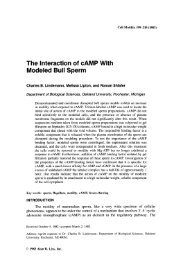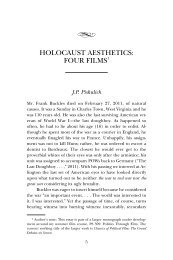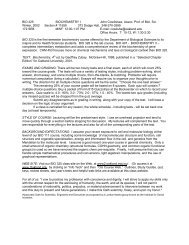Susan Wood, Saving a Haitian National Icon - Oakland University
Susan Wood, Saving a Haitian National Icon - Oakland University
Susan Wood, Saving a Haitian National Icon - Oakland University
Create successful ePaper yourself
Turn your PDF publications into a flip-book with our unique Google optimized e-Paper software.
which the first consul of Republican Rome faces a wrenching<br />
choice between punishing collaborators with the deposed king<br />
or sparing the lives of his own sons, accounted for some of the<br />
painting’s popularity. The scene must have hit home emotionally<br />
to people who remembered the Reign of Terror. But his<br />
technical skill also inspired admiring comparisons with Titian,<br />
Guido Reni, Coreggio and Rubens. 3<br />
In the following years, however, Napoleon went into exile<br />
and the Bourbon monarchy returned to power. During the<br />
“Hundred Days” when Napoleon escaped from exile on Elba<br />
to attempt a restoration of the Republic, Lethière took down<br />
the royal flag and hoisted the revolutionary Tricouleur above<br />
the French Academy in Rome with what later seemed to King<br />
Louis XVIII as unseemly haste. 4 That demonstration of Republican<br />
sympathy later almost cost Lethière his election to<br />
the Institute of Fine Arts. After Waterloo and Napoleon’s final<br />
exile to Ile Ste. Hélène, therefore, paintings with revolutionary<br />
subject matter—especially those by artists with openly antimonarchical<br />
views—were no longer likely to find patrons.<br />
Artistic fashions, meanwhile, had moved on from neoclassical<br />
history painting to Romanticism, making Lethière’s work look<br />
somewhat dated. Therefore, the next painting in his Roman<br />
cycle, The Death of Virginia, elicited little except yawns in 1828.<br />
The indifference of critics and connoisseurs to that painting<br />
must have been especially hurtful to the artist since it dealt<br />
with a subject close to his own heart, the injustice of slavery<br />
and the rebellion of oppressed people against it. 5 He never<br />
completed the final two canvasses of the cycle although a detailed<br />
oil study exists for one of them. 6 During the years when<br />
he was working on his Death of Virginia, Lethière also painted<br />
his Oath of the Ancestors. This is the only known work that<br />
Lethière signed not only with his name but also with a proud<br />
statement of his origins: “Guillaume Guillon-Lethière, né a<br />
Guadaloupe, An 1760, Paris, 1822, 7bre.”<br />
The Oath of the Ancestors is a huge canvas, 3.34 meters high<br />
and 2.28 meters wide, depicting life-size or nearly life-size figures.<br />
The event that it depicts transpired twenty years earlier,<br />
37
















